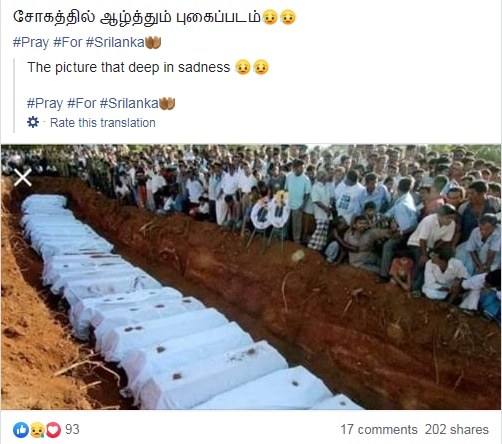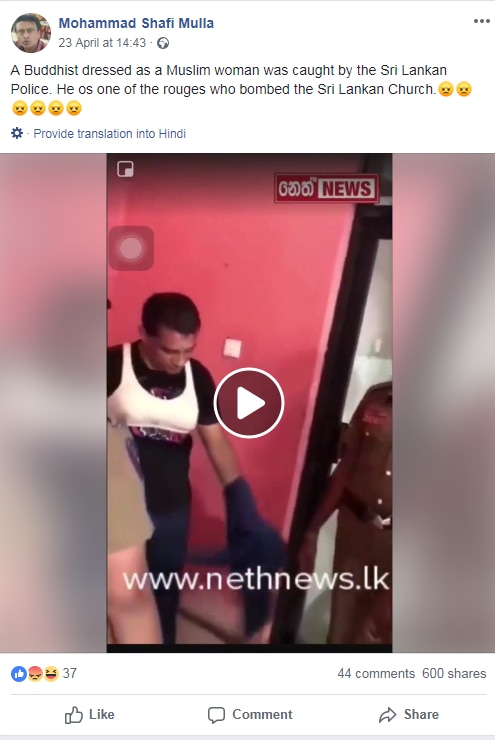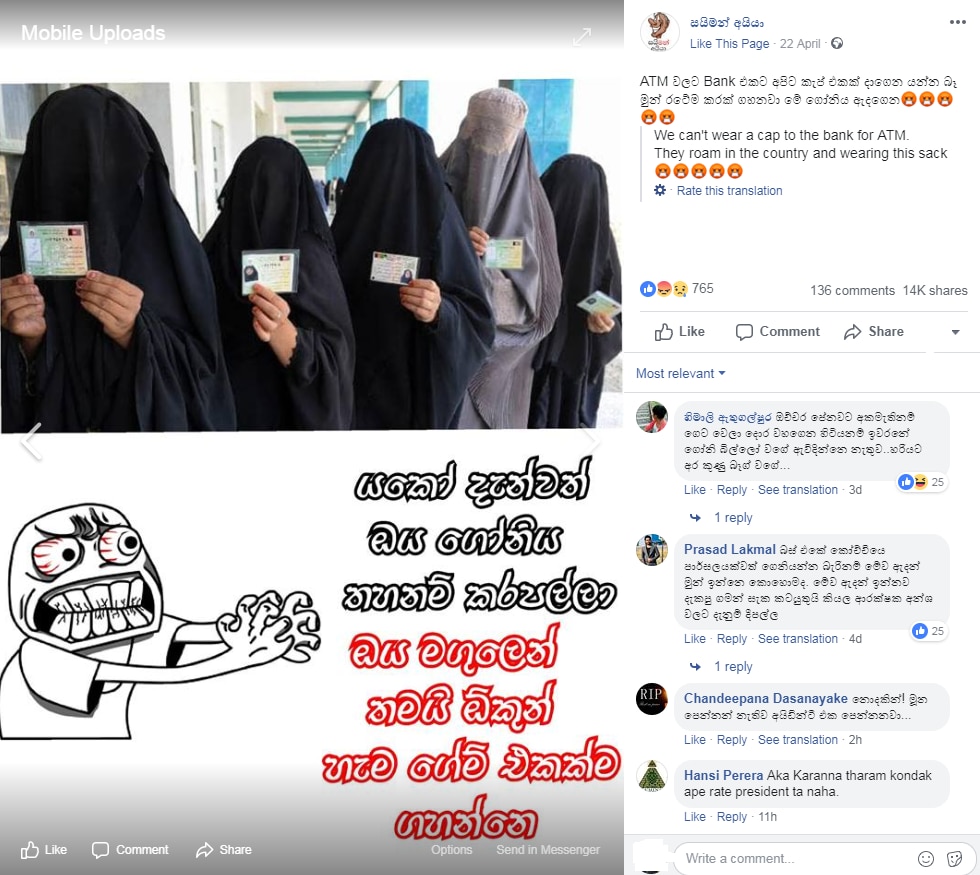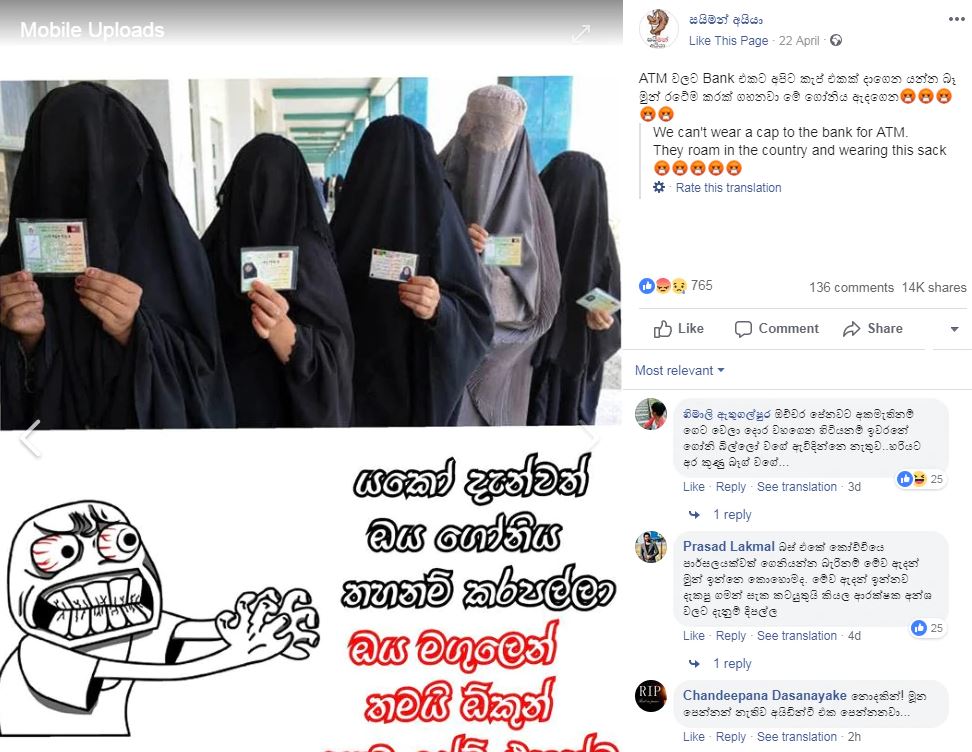In the hours after Sri Lanka’s Easter Sunday attacks, the Sri Lankan government took the drastic action of blocking access to social media sites within the country.
In a misguided attempt to prevent the spread of false news reports and rumours about who was responsible for the attacks, messaging services including Facebook Messenger, WhatsApp, Instagram and Viber were blocked. However, through the use of VPN (virtual private network) services that can reroute internet connections outside of the country, many people were able to circumvent the ban – not least, those intent on spreading misinformation.
On the Sunday of the attack, Prime Minister Ranil Wickremesinghe pleaded with the people of Sri Lanka to “please avoid propagating unverified reports and speculation.”
I strongly condemn the cowardly attacks on our people today. I call upon all Sri Lankans during this tragic time to remain united and strong. Please avoid propagating unverified reports and speculation. The government is taking immediate steps to contain this situation.
— Ranil Wickremesinghe (@RW_UNP) April 21, 2019
This was not the first time Sri Lanka had encountered a problem with the spread of speculative and even hateful content on social media. The country blocked Facebook in March 2018 after posts inciting anti-Muslim violence spread on the platform.
“After events like this, [people intent on stoking tension between religious groups] start fearmongering, creating and sharing fake stories,” Sri Lankan radio journalist Dominic Kellar told Dateline.
“They will share old videos and moments of racial unrest or gang related incidents. People believe it’s happening now and the fear spreads. They might think they’re helping, or filling an information gap, when it is sparse, but it is leading to problems.”
The false stories that spread after the attacks
Yudhanjaya Wijeratne, a researcher at LIRNEasia, an Asia-Pacific think tank, runs watchdog.paladinanalytics.com, a website dedicated to fact checking rumours that have spread in Sri Lanka since the attack.
Among the debunked claims are stories of:
- Water poisoning in the Hunipitiya region of Colombo.
- Video of a man dressed in a burqa, who is claimed to be one of the perpetrators.
- A shooting incident in Kadawatha that was a tyre exploding.
- A false message from IS warning of impending blast in 24 hours.
- That an IS university was being developed in the country.
- Sri Lankans would now have ‘Visa-free’ entry to Canada.
- A bomb had been planted at Dehiwala junction bridge.
- Spice manufacturer Mc Currie is owned by father of suicide bomber.
News service Agence France-Presse ran a fact check across viral social media posts following the Easter Sunday attacks. Images below have been debunked as existing photos from the agency’s archive.

This AFP photo from 2006 was shared as an image of a mass funeral after Easter Sunday attacks.

This video of an alleged bomber is a story from 2018 of a man dressed in a burqa who attacked someone over a debt.

The photograph was taken on in Afghanistan August 20, 2009 by AFP photographer Banaras Khan and claimed to be Sri Lankan Muslims.
Why false news stories spread after a crisis
Professor Axel Bruns has been examining fake news through the Queensland University of Technology’s Digital Media Research Centre.
“The core of what we use the term ‘fake news’ for is deliberate misinformation. That is, trying to deceive people into believing something is true that isn’t,” he tells Dateline.
“A lot of people are saying the term itself is problematic, and we should use terms likes misinformation and disinformation and malinformation, to distinguish them.”
When events like Sri Lanka’s Easter attacks happens, Bruns says people very quickly try to fill the information gap – and that the pace of social media impedes responsible verification.
“To some extent it’s human nature. You haven’t got all the facts. You’re trying to piece together what’s going on.
“Social media can amplify that and put a larger group together to work out what’s going on and speculate on who is behind all of this and so on.”
The recent social media bands are not the first for Sri Lanka. After rumours and video spread on social media sparked violence between Buddhists and Muslims the government shut down social media in a bid to quell the violence.
It is not the first country to temporarily block social media communication in the name of public safety. Facebook was blocked in Egypt during 2011’s Arab Spring, as well as in Vietnam during protests in 2016.
“In some cases governments can try to shut down and block social media altogether to prevent the circulation of rumours,” Bruns said.
“This happened early on in the Arab Spring, when the Egyptian government at the time tried to shutdown twitter and other social media platforms. In the end users used VPNs to get around it.
“The Sri Lanka bombings had rumours circulating and outright misinformation as well.”
Bruns added following events like Sri Lanka and New Zealand’s Christchurch attacks, social media became a battleground to push an agenda or perspective – as stories and comments are propagated to build arguments for or against beliefs.
“I think it happened more in internationally with the alt right movement to either draw attention away from the far right terrorist who attacked the mosque in Christchurch and to attract more attention to the group who is behind the Easter attack in Sri Lanka,” he said.
“Whenever these things happen there’s an attempt to interpret them according to a world view, to use it as a further link in the chain of conspiracy theory or particular ideologies by framing the events in a particular way. That’s happening mores after these events.”
The criticisms and current ban
Sri Lanka’s ban was not without its critics from both in and outside the country.
Writing in The Conversation, Stanford University Research Scholar Jan Rydza explained:
“The blackouts deprived Sri Lankans of impartial news reports and disconnected families from each other as they sought to find out who had survived and who was among the dead and injured. Most strikingly, recent research suggests that the blackouts might have increased the potential for protest and violence in the wake of the attack.”
Wijeratne, the researcher at LIRNEasia who has been debunking Sri Lanks’s social media rumours told Coda Story:
“Blocks don’t work for a number of reasons; they strengthen the very news they were intended to contain or control. In the context of Sri Lanka, given the bitter experience we have had with censorship of the media and dictatorial rule, those who somehow circumvent social media blocks, continue to do so. Those who push back on rumour and strengthen truth telling and truth seeking and maintain civil discourse, we are at a disadvantage.”
Three weeks after the Easter Sunday attacks, Sri Lanka has again introduced a social media ban. After it was lifted in late April, violence between groups of citizens in the region of Negombo has prompted authorities to reintroduce a curfew in the area in addition to blocking social media.


